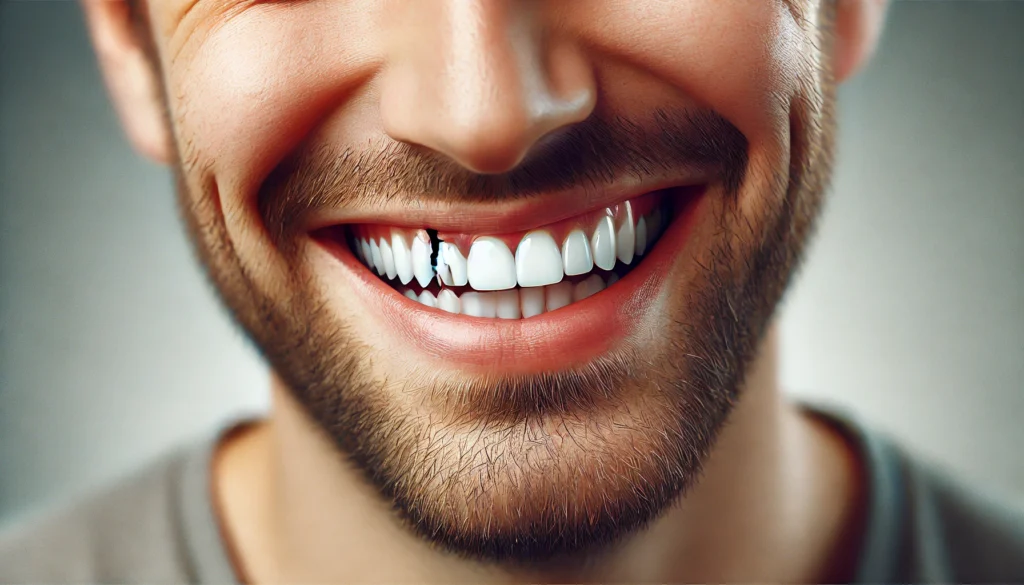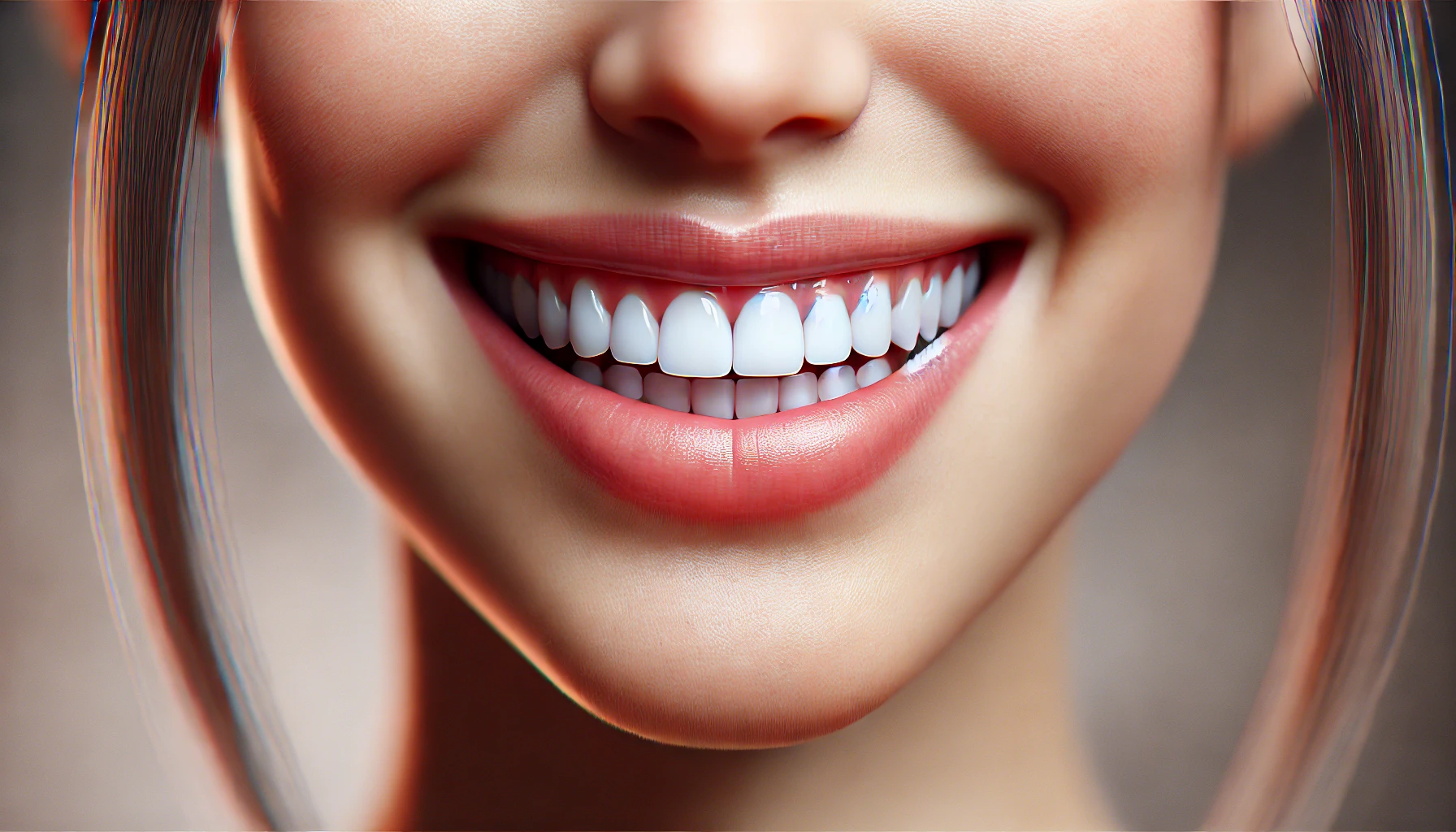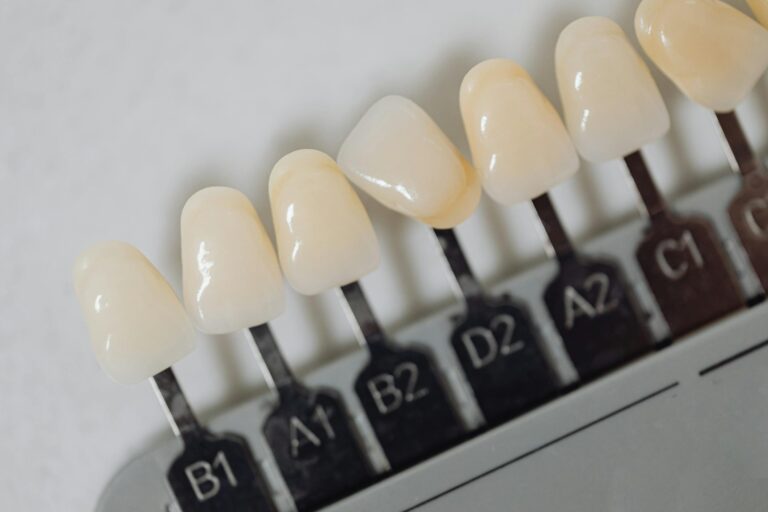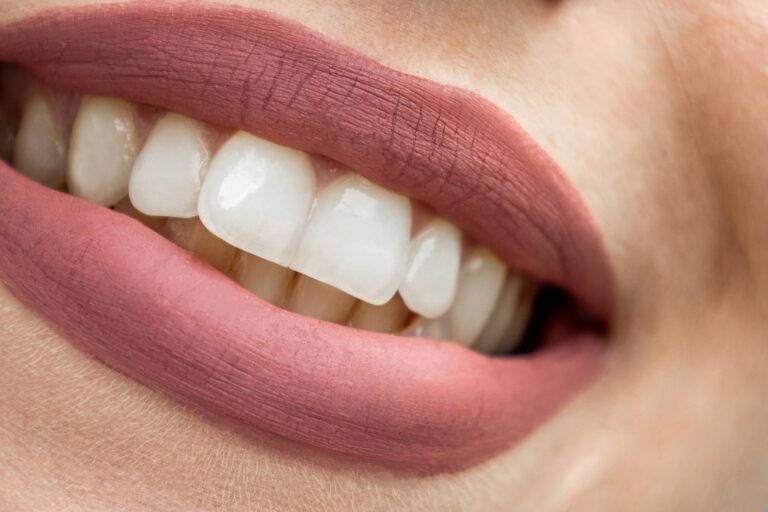
Dental bonding is a widely recognised cosmetic dental procedure that provides a swift and efficient means to enhance one’s smile. Unlike veneers, which cover the entire surface of a tooth, bonding entails the application of a tooth-coloured resin specifically to repair or improve the appearance of selected teeth. But can bonding be done for front teeth only?
This article will delve into dental bonding, outlining its benefits, potential risks, and the step-by-step process involved. Additionally, it will address the suitability of dental bonding for front teeth, offer maintenance tips, and present alternatives to consider, ensuring you are well-informed for your smile transformation.
What Is Dental Bonding?

Dental bonding is a widely recognised cosmetic dentistry procedure that entails the application of a durable resin composite to restore or enhance the appearance of front teeth. Many individuals opt for this versatile solution due to its effectiveness in addressing various issues, including chipped teeth, tooth decay, and minor dental imperfections.
This procedure can provide a substantial improvement in dental aesthetics and the overall appearance of one’s smile. With the expertise of skilled dental professionals, patients can achieve impressive results that not only enhance their oral health but also contribute to their attractiveness.
How Is Dental Bonding Different from Veneers?
Dental bonding and veneers are both widely recognized options in aesthetic dentistry, each offering unique benefits for enhancing one’s smile. A notable distinction lies in their application, materials, and overall results, particularly when comparing before and after dental bonding to the transformative effects of veneers.
Dental bonding involves applying composite resin to repair or reshape teeth, with subtle but noticeable improvements visible before and after dental bonding. In contrast, veneers are custom-designed shells that cover the front surface of teeth, providing a more dramatic transformation for those seeking significant cosmetic enhancements.
Understanding these distinctions is essential for ensuring optimal patient satisfaction. Dental bonding is generally more cost-effective and can often be completed in a single visit, making it an attractive choice for minor repairs or cosmetic improvements.
While its longevity may not be on par with that of veneers, which tend to be more expensive and require multiple appointments for fitting, veneers provide greater durability and a more natural appearance.
Ideal scenarios for dental bonding usually involve addressing chips or gaps, while veneers are better suited for individuals seeking significant aesthetic changes, such as reshaping or colour correction. Ultimately, the decision between bonding and veneers should be guided by personal needs and desired outcomes.
What Are the Reasons for Dental Bonding?
Dental bonding serves a variety of important purposes, making it a valuable option for individuals who wish to enhance their smiles and address different dental issues.
Patients typically turn to dental bonding for several reasons, including:
- Repairing chipped teeth
- Treating tooth decay
- Improving the overall aesthetics of their smiles
This procedure provides an effective solution that integrates smoothly with the existing tooth structure, ensuring a natural appearance.
What Are the Uses of Dental Bonding?
Dental bonding is a highly versatile treatment in modern dentistry, serving both cosmetic and restorative purposes. It is commonly used to repair teeth affected by decay, reshape misshapen teeth, close gaps between teeth, and enhance the colour of discoloured teeth. Ultimately, these applications contribute to improved smile aesthetics and overall oral health.
This technique is particularly advantageous for individuals looking for quick solutions to enhance their smiles without resorting to invasive procedures. By using composite resin, dental professionals can effectively address specific imperfections, customising the colour and shape to blend seamlessly with the surrounding teeth.
Bonding techniques work remarkably well for minor corrections, such as chips and cracks, that can detract from one’s overall appearance. When properly maintained, the longevity of bonding results highlights its effectiveness as a preferred solution in cosmetic dentistry, enableing patients to regain confidence in their smiles.
How Is Dental Bonding Performed?

The dental bonding procedure is a simple yet effective treatment carried out by a dentist, aimed at restoring and improving the appearance of the teeth.
The process begins with a thorough dental evaluation to assess the condition of the affected teeth. After this assessment, the dentist selects a bonding material that closely matches the colour of the natural tooth, ensuring a seamless and natural look.
What Are the Steps Involved in Dental Bonding?
The dental bonding procedure involves a series of systematic steps designed to achieve both effective and aesthetically pleasing results for the patient. The process typically begins with the preparation of the tooth surface for bonding. This is followed by the application of an adhesive agent, which facilitates a strong attachment of the bonding material to the tooth structure.
This initial preparation is essential; it often involves cleaning the tooth and, in some cases, etching the surface to improve adhesion. After this, the bonding material, usually a composite resin, is meticulously applied to the area that requires repair or enhancement. The dentist then shapes the material to match the natural contour of the tooth.
Once the dentist is satisfied with the form, a special light is employed to harden the resin, ensuring a secure bond. The final touches include polishing the surface, which not only enhances the overall appearance but also contributes to the longevity of the bond.
Each phase of the procedure is crucial in maximising the success rate of the bonding and ensuring that the final result appears seamless and natural.
How Long Does Dental Bonding Take?
The duration of a dental bonding procedure can vary depending on the complexity of the treatment and the number of teeth being bonded. Typically, it takes about 30 to 60 minutes per tooth during a dental appointment. This relatively quick bonding process has made it a popular option for patients looking for efficient cosmetic enhancements to their smiles.
Several factors can influence the overall time required, such as the specific issues that need addressing, including cracks, gaps, or discolouration. If multiple teeth are treated during the same visit, this may extend the appointment duration, as the dental professional must ensure that each bonding application is performed with precision to achieve optimal results.
During the initial consultation, a thorough assessment of these complexities will provide a more accurate time estimate, helping individuals understand what to expect before undergoing the bonding procedure.
Can Dental Bonding Be Done for Front Teeth Only?
Dental bonding is not restricted to just the front teeth, but it tends to be especially favoured for anterior teeth because of their prominent role in one’s smile.
Many patients choose to have bonding done on their front teeth as part of cosmetic procedures aimed at correcting imperfections, improving aesthetic appeal, and restoring confidence in their smiles.
What Are the Benefits of Bonding Front Teeth?
The benefits of bonding front teeth are numerous, offering a variety of aesthetic and functional enhancements that can greatly improve a patient’s smile. Notable advantages include the swift repair of chipped teeth, restoration of tooth colour, and overall improvement in smile alignment. This makes dental bonding an attractive option within the realm of cosmetic dentistry.
Moreover, individuals considering dental bonding can appreciate the natural-looking results it provides, as the material blends seamlessly with existing teeth, contributing to a polished appearance. This technique is also a cost-effective alternative to more invasive options like crowns or veneers, allowing for improved dental aesthetics without a significant commitment.
The bonding process is relatively quick—often completed in a single visit—which means patients can enjoy swift results, encouraging them to embrace their new, vibrant smiles with confidence.
Beyond addressing cosmetic concerns, dental bonding also enhances self-esteem, as a beautiful smile is often perceived as a gateway to both personal and professional opportunities.
What Are the Risks and Limitations of Bonding Front Teeth?

While dental bonding provides numerous benefits, it is important to recognise the risks and limitations associated with the procedure, especially when it comes to front teeth.
Patients should be aware that bonding materials may not possess the same durability as other dental options, such as crowns or veneers. Additionally, these materials can be susceptible to chipping or staining over time, which makes regular dental evaluations and care essential.
Can Bonding Front Teeth Cause Sensitivity?
Some patients may notice tooth sensitivity after undergoing a bonding procedure, especially if the underlying tooth structure is involved or if the bonding material is not applied properly. It is important for patients to express any discomfort during their consultation with the dentist. This communication helps ensure that the bonding process is as effective and comfortable as possible.
It is essential to understand that sensitivity can result from various factors, including nerve exposure or improper technique. Patients should feel encouraged to share their experiences with their dental professionals, who can then offer personalised advice and potential solutions.
Here are a few helpful tips to manage sensitivity effectively:
- Use desensitising toothpaste
- Maintain good oral hygiene
- Avoid extremely hot or cold foods for a few days after the procedure
These strategies can significantly reduce symptoms. Proactive communication with dental care providers is crucial for a smoother recovery and a more successful outcome following the bonding procedure.
Can Bonding Front Teeth Stain or Chip?
Bonding on front teeth can indeed stain or chip due to various factors, including the quality of the bonding materials used and the patient’s dental hygiene habits. It is important to maintain good oral care practices and schedule regular dental check-ups to help mitigate these issues and enhance the durability of the bonding.
Several additional elements play a crucial role in the longevity of dental bonding. For instance, the foods and beverages consumed can significantly impact the aesthetics of the teeth. Substances such as coffee, tea, and red wine have the potential to cause discolouration over time.
Moreover, habits such as grinding teeth or using them to open packages can contribute to chipping, highlighting the importance of protective measures. Regular professional cleanings not only help in removing surface stains but also provide dentists with the opportunity to assess the integrity of the bonded teeth.
By being proactive about oral hygiene and making mindful dietary choices, individuals can preserve the appearance and functionality of their bonded teeth, ensuring they remain a long-lasting solution.
How to Care for Bonded Front Teeth?
Caring for bonded front teeth is crucial for ensuring their longevity and preserving their aesthetic appeal.
Engaging in regular dental hygiene practices—such as brushing with a non-abrasive toothpaste, flossing, and attending dental check-ups—can greatly enhance the durability of the bonding materials as well as contribute to overall oral health.
What Foods and Drinks Should Be Avoided with Bonded Front Teeth?
To protect bonded front teeth and maintain their appearance, it is important to consume certain foods and drinks with caution or avoid them altogether. Items known to cause staining, such as coffee, tea, and red wine, can adversely affect dental aesthetics and the longevity of the bonding materials.
Additionally, acidic foods like citrus fruits and vinegar-based dressings may weaken the bond over time, so it is advisable to limit their consumption as well. Sugary treats, including sweets and fizzy drinks, can lead to plaque buildup, jeopardising the durability of the bond and possibly resulting in discolouration.
Individuals with bonded teeth should be particularly mindful of their dietary choices, opting for water and non-staining foods like apples and pears.
This careful approach not only helps preserve the appearance of bonded teeth but also highlights the importance of maintaining good dental hygiene practices for lasting results.
How to Maintain the Colour and Shape of Bonded Front Teeth?
Maintaining the colour and shape of bonded front teeth requires careful attention to oral hygiene. Regular dental visits for professional cleaning, combined with a commitment to at-home care that includes diligent brushing and flossing, are essential for preserving both the aesthetic results and the overall health of bonded teeth.
To further enhance the longevity of the bonding material, individuals should be mindful of their dietary choices, steering clear of staining foods and beverages such as coffee, tea, and red wine. Utilising a soft-bristled toothbrush along with a non-abrasive toothpaste can help prevent any scratching or dulling of the bonded surface.
Additionally, incorporating an alcohol-free mouthwash can protect the bond while also promoting overall oral hygiene.
It is also advisable to schedule regular check-ups with the dentist to evaluate colour matching and the integrity of the bonding. Professional touch-ups may be necessary to ensure a seamless and appealing appearance.
What Are the Alternatives to Bonding Front Teeth?

Dental bonding is indeed a popular choice for improving the appearance of front teeth; however, there are several alternatives that might better align with individual needs and preferences.
Options such as veneers, crowns, and orthodontic treatments offer various approaches to addressing cosmetic concerns, each accompanied by its own set of benefits and considerations.
Exploring these alternatives can help one make an informed decision that best suits their dental goals.
What Is the Difference Between Bonding and Veneers for Front Teeth?
The primary distinction between bonding and veneers for front teeth is found in their application as well as the outcomes they produce. Bonding generally provides a quicker and less invasive solution, while veneers offer a more comprehensive cosmetic enhancement.
In bonding, a resin material is applied directly to the surface of the tooth. In contrast, veneers are custom-made shells that cover the entire front of the tooth.
This fundamental difference impacts several factors, including cost, the time needed for the procedure, and the aesthetic results patients can anticipate. Typically, dental bonding is more affordable and can often be completed in a single visit, making it an appealing choice for individuals seeking quick solutions.
Conversely, veneers usually require multiple appointments for consultation and fitting, ensuring that the result is a perfect match for the desired smile. While bonding can effectively address minor chips and gaps, veneers tend to deliver a more dramatic improvement, resulting in longer-lasting satisfaction for those pursuing significant aesthetic transformations.
Are There Other Cosmetic Options for Front Teeth?
There are indeed several cosmetic options available for front teeth that extend beyond bonding and veneers, addressing a range of dental aesthetics and functional requirements. Treatments such as tooth whitening, orthodontics, and dental crowns each play a significant role in achieving the desired transformation of one’s smile, offering patients various choices to enhance their appearance.
Professional teeth whitening, for instance, is a highly effective method for addressing discolouration, resulting in a brighter smile and increased self-confidence. Orthodontic solutions, such as clear aligners, offer discreet options for correcting misalignment while preserving aesthetics. For individuals who need more extensive repairs, dental crowns can effectively restore both function and form, strengthening damaged teeth.
Each of these options not only enhances visual appeal but also contributes positively to overall dental health, ensuring that every smile is both beautiful and functional. Patients are encouraged to consult with their dental professionals to identify the most suitable option tailored to their specific needs.
Frequently Asked Questions
Can bonding be done for front teeth only?
Yes, bonding can be done specifically for front teeth. This is a common cosmetic dental procedure that can improve the appearance of front teeth that are chipped, stained, or have gaps.
What is bonding?
Bonding is a dental procedure in which a tooth-colored resin material is applied and hardened with a special light, bonding the material to the tooth. This can be used to improve the appearance of teeth or to repair damage.
Is bonding a permanent solution?
No, bonding is not a permanent solution. The material used in bonding can last for several years, but it is not as durable as other cosmetic dental procedures such as veneers or crowns. It may need to be replaced or touched up over time.
How long does bonding for front teeth last?
The lifespan of bonding for front teeth varies depending on factors such as oral hygiene habits, diet, and the location of the bonded tooth. On average, bonding can last anywhere from 3-10 years.
What are the benefits of bonding for front teeth only?
Bonding is a quick and cost-effective way to improve the appearance of front teeth. It can also be used to fix minor imperfections such as chips or gaps without having to remove any tooth structure. Additionally, bonding can be completed in just one visit to the dentist.
Is bonding for front teeth only covered by insurance?
In most cases, bonding for front teeth is considered a cosmetic procedure and is not covered by insurance. However, it is always best to check with your insurance provider to see what is covered under your plan.






